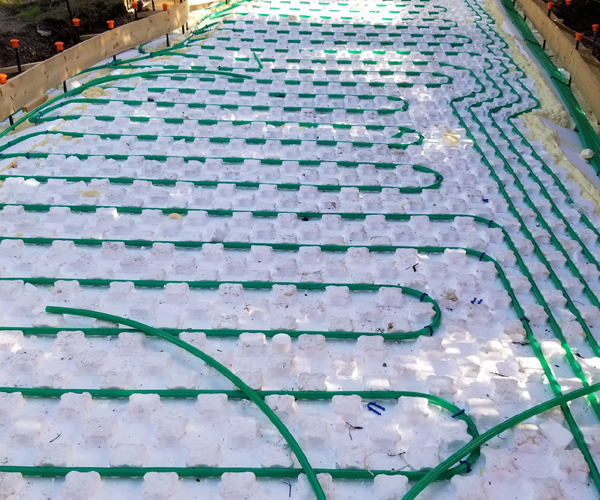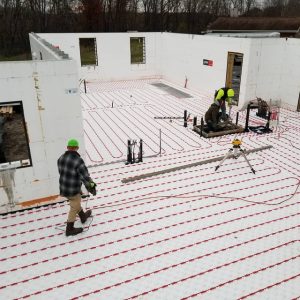
No — Heat-Sheet functions perfectly well as under-slab insulation and can even serve as the vapor barrier, but it is not an adequate Radon barrier.
Heat-Sheet packs a ton of thermal resistance — you can get as much as R-16.1 out of these panels. (The R14 Heat-Sheet can achieve R16.1 when made with graphite polystyrene – this is only available at some of our plants and on a special order basis.)
You can also use Heat-Sheet without an additional vapor barrier, as long as it exceeds 25psi and has an R-Value of R-10 in Canada and R-12 in the US.
That said, Heat-Sheet lacks the properties required to block Radon from getting through a home’s foundation. This means you’ll need to plan for a separate Radon barrier if you’re using Heat-Sheet under the home’s basement slab.
What is Radon?
Radon is a radioactive gas that emits during uranium’s decay process. It rises from the ground, and without an adequate barrier, is capable of infiltrating buildings, where its concentrations can accumulate to harmful levels.
Long-term Radon exposure has been proven to be a severe hazard to human health, being directly blamed for 16% of all lung cancer deaths. And while its prevalence in North America varies between regions, hazardous concentrations of Radon may be present in 7% of all homes in Canada.
What can I use as a Radon barrier?
To protect a home or building from Radon ingress, you can use the code-compliant 6-mil poly solution — this may work well if you’ve got Heat-Sheet beneath the slab.
Alternatively, you can opt for Halo Subterra Plus, which is 7 times more effective than poly at blocking the harmful gas, according to the National Research Council of Canada. Plus a layer of Subterra Plus will add additional R-value under your slab.






